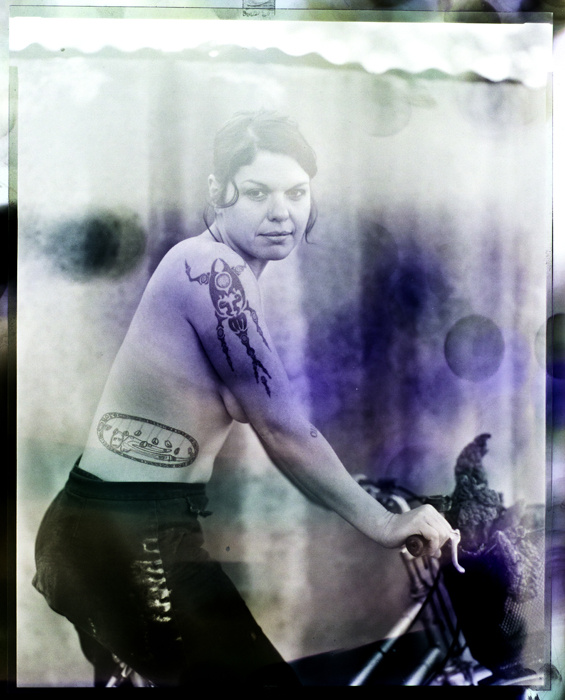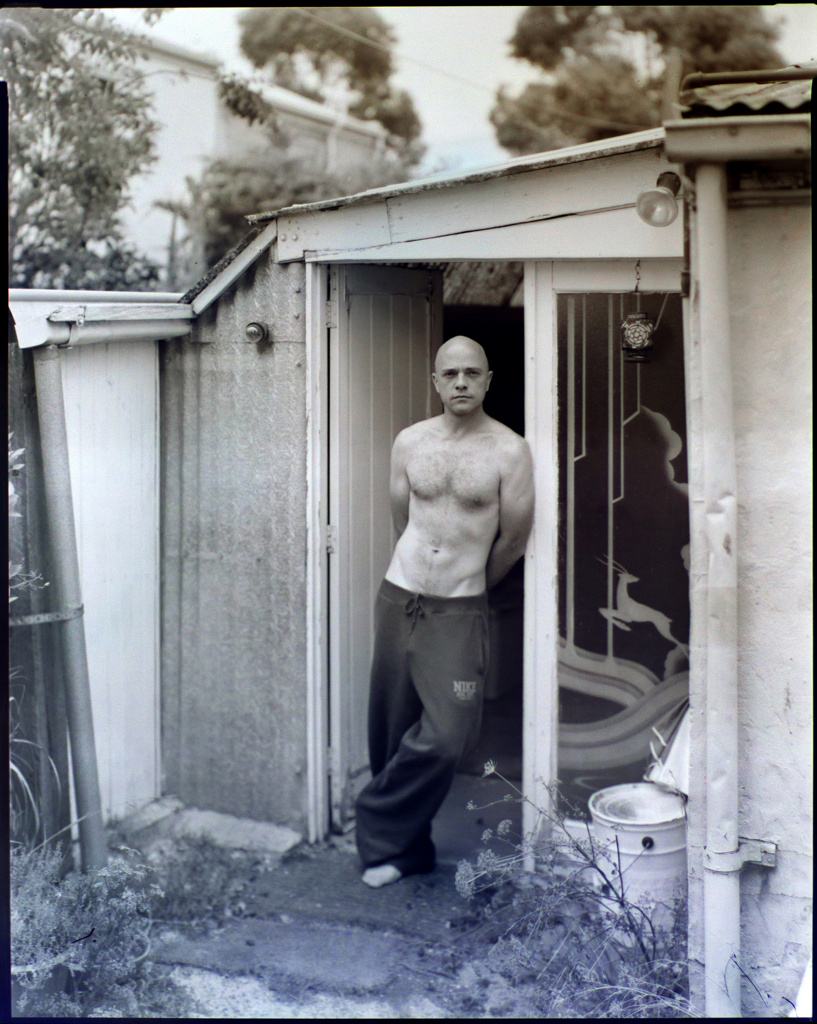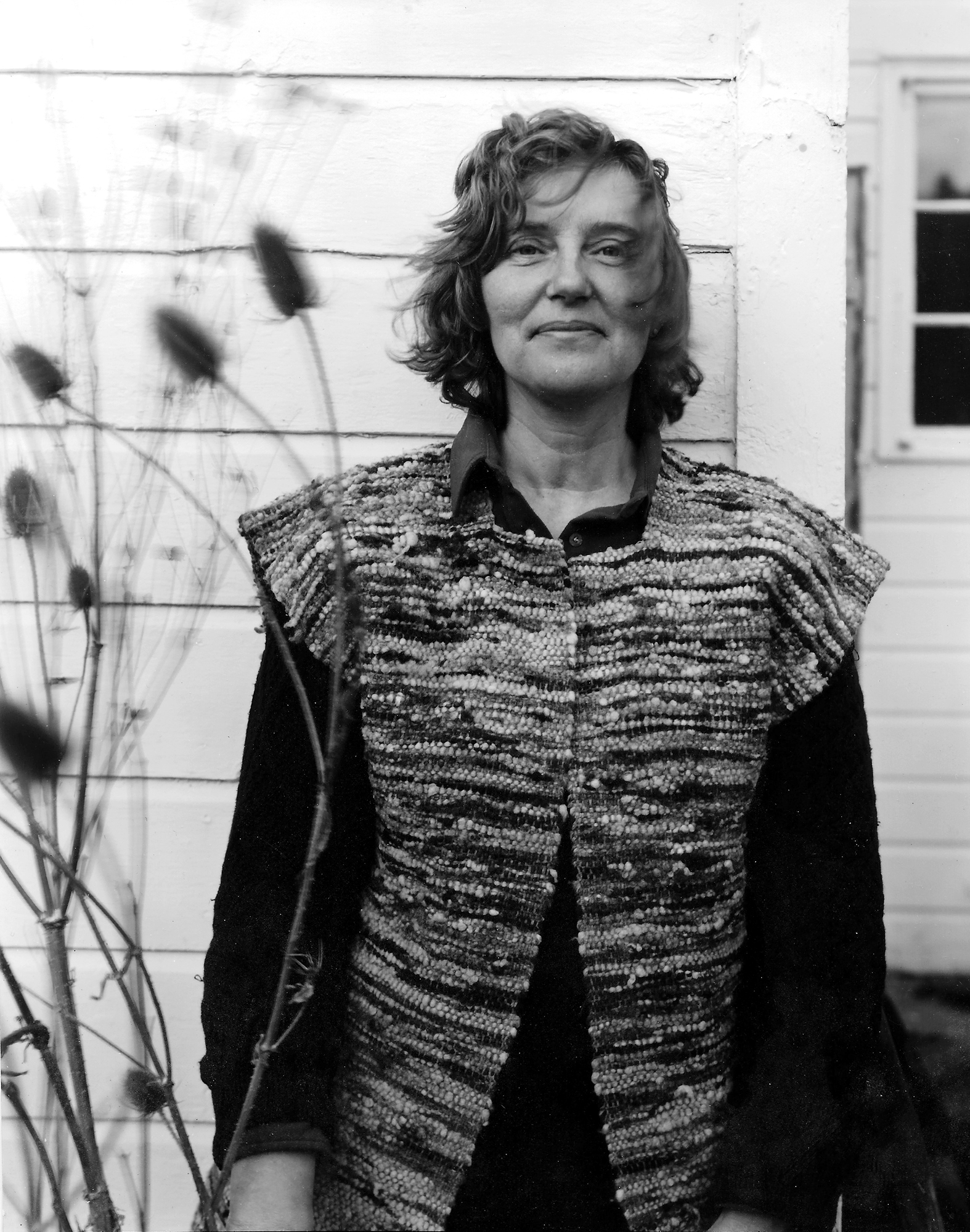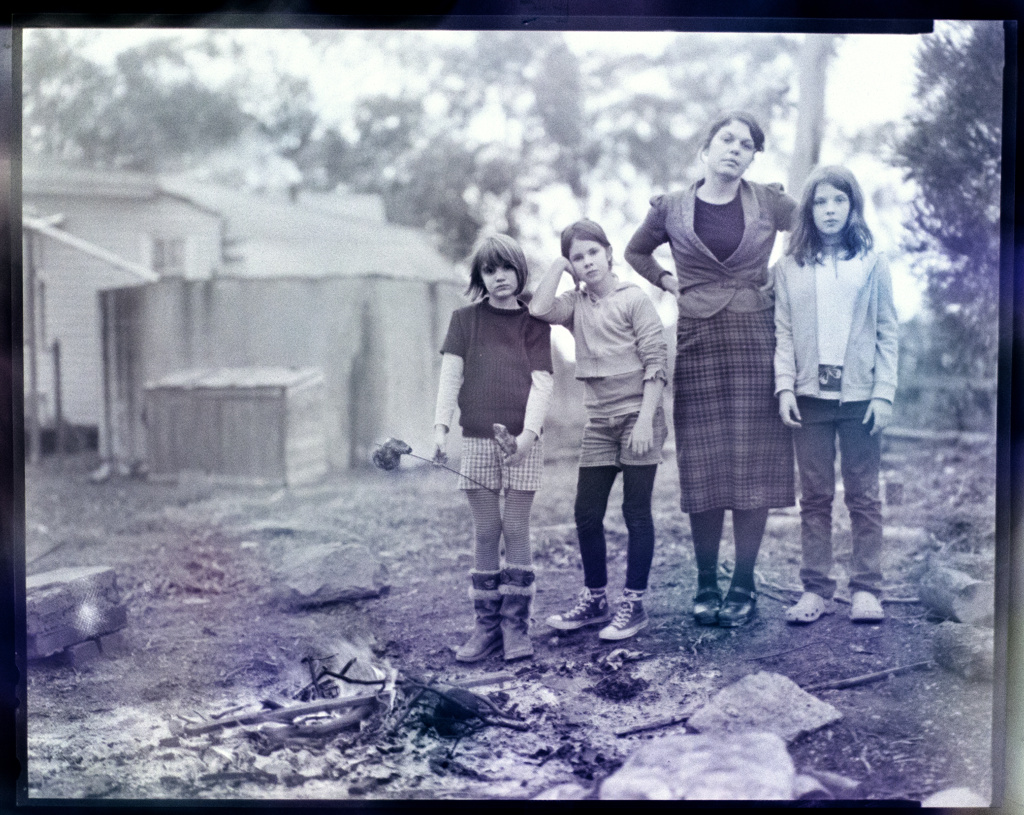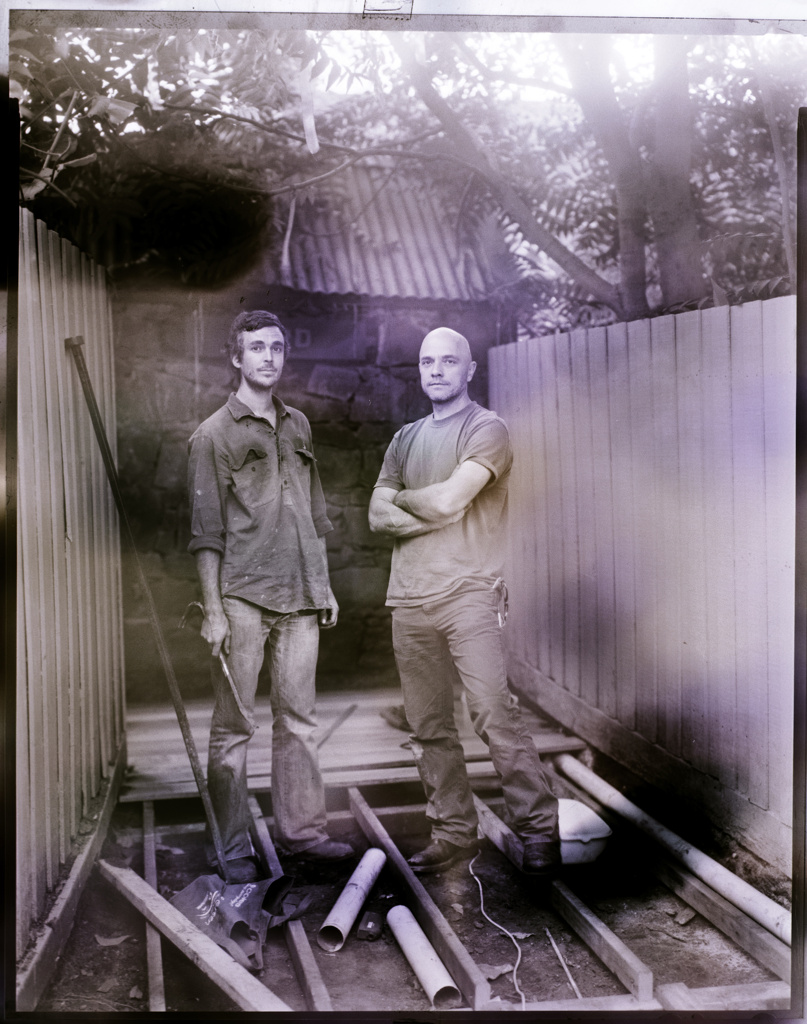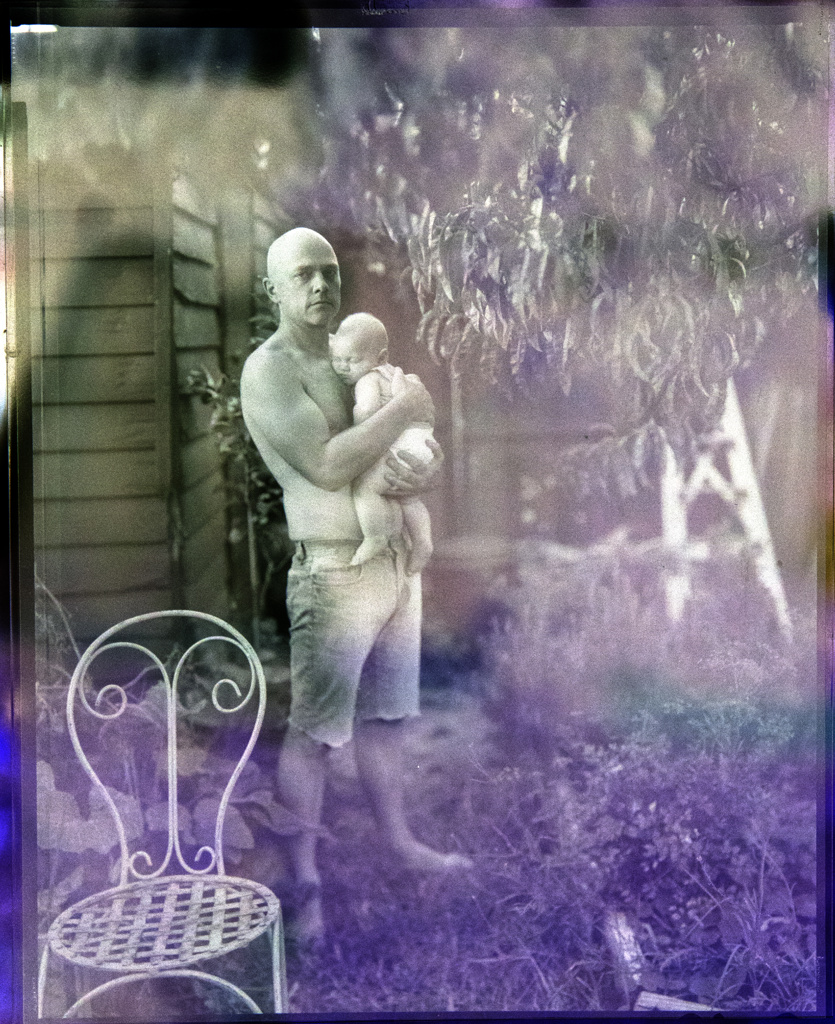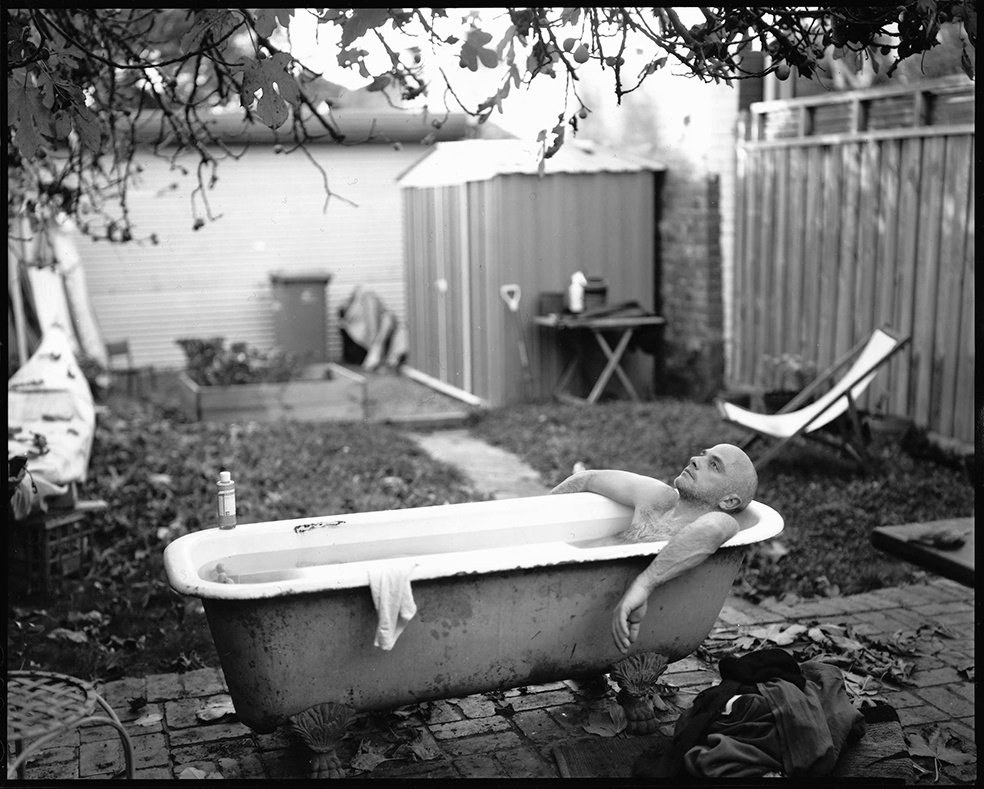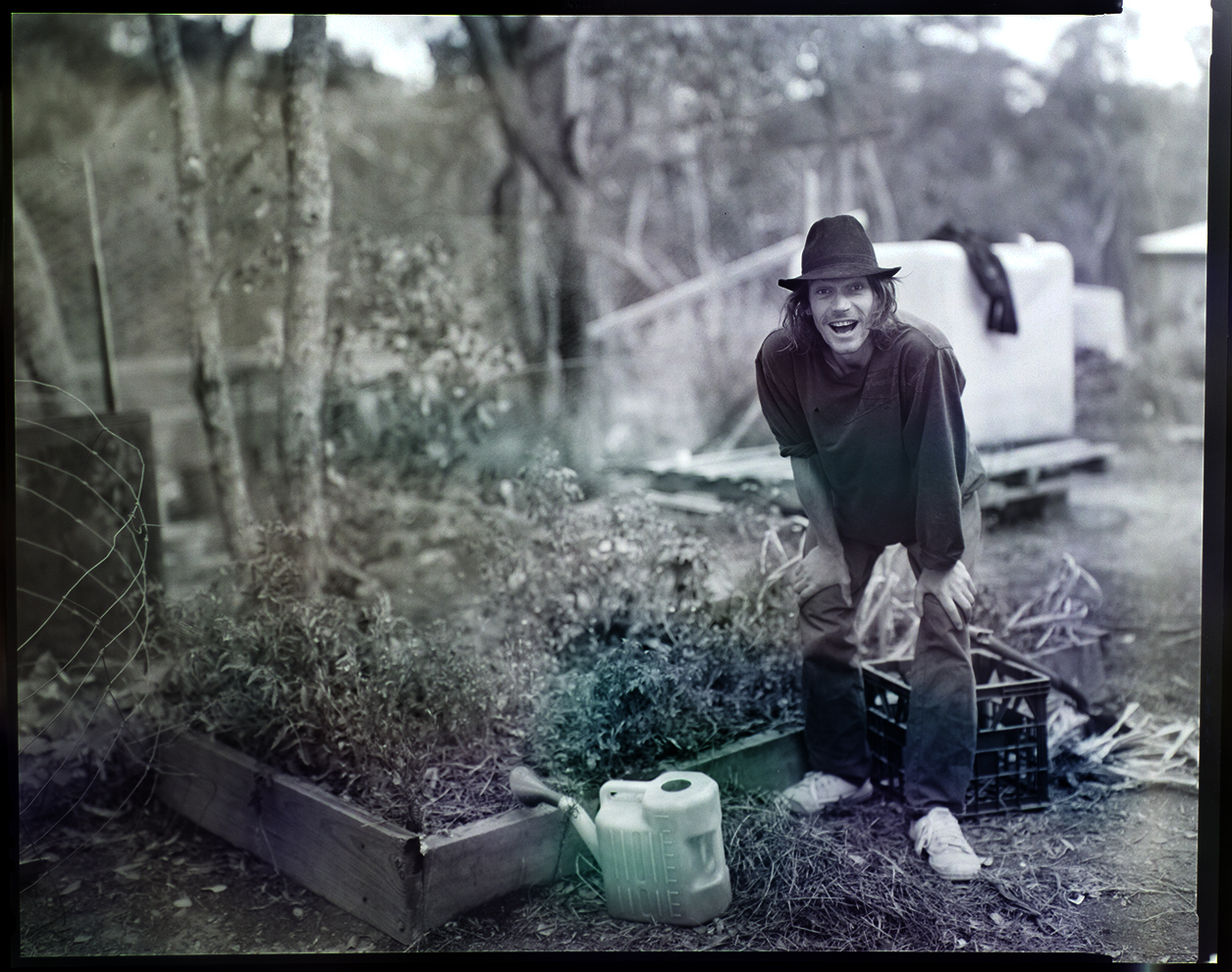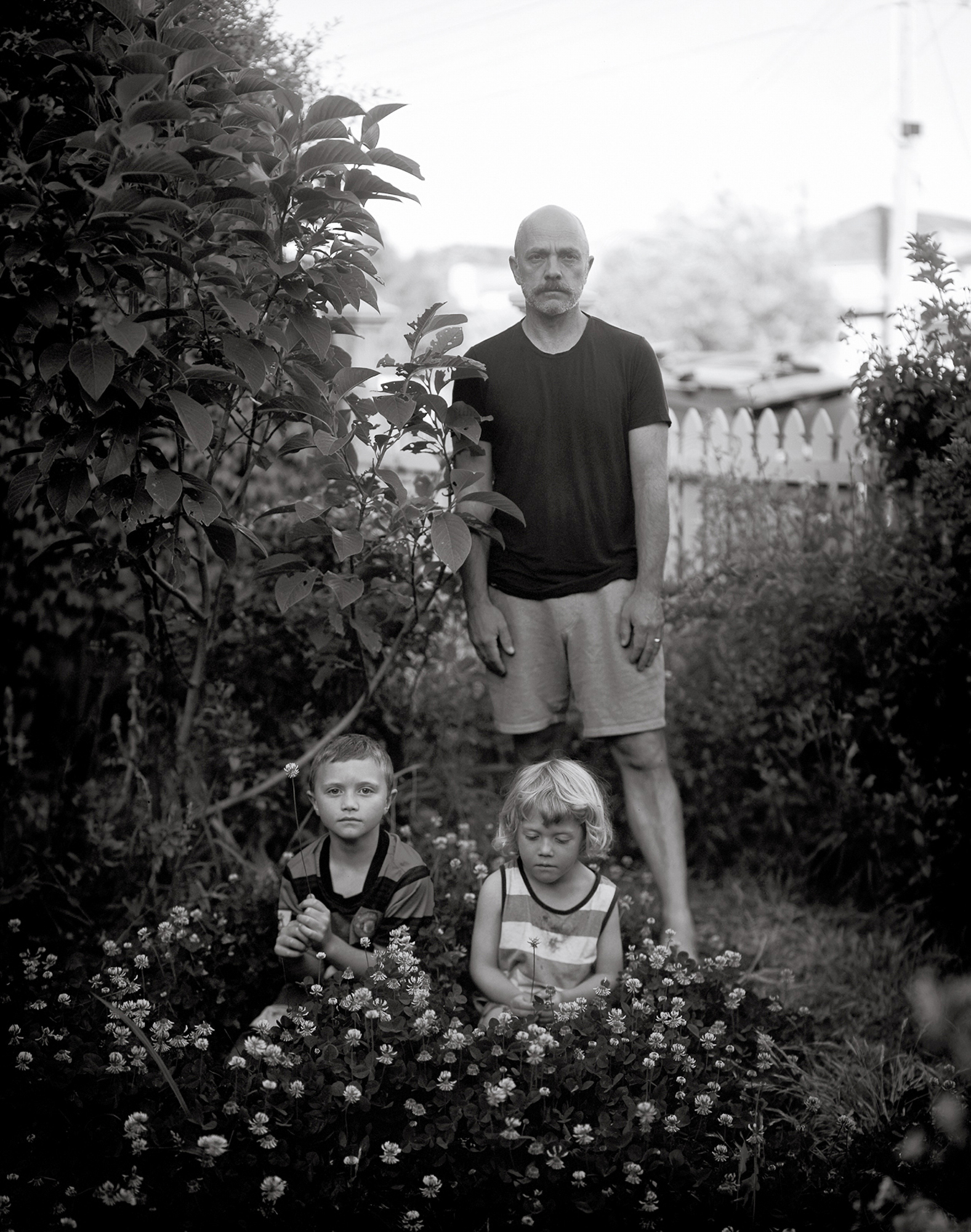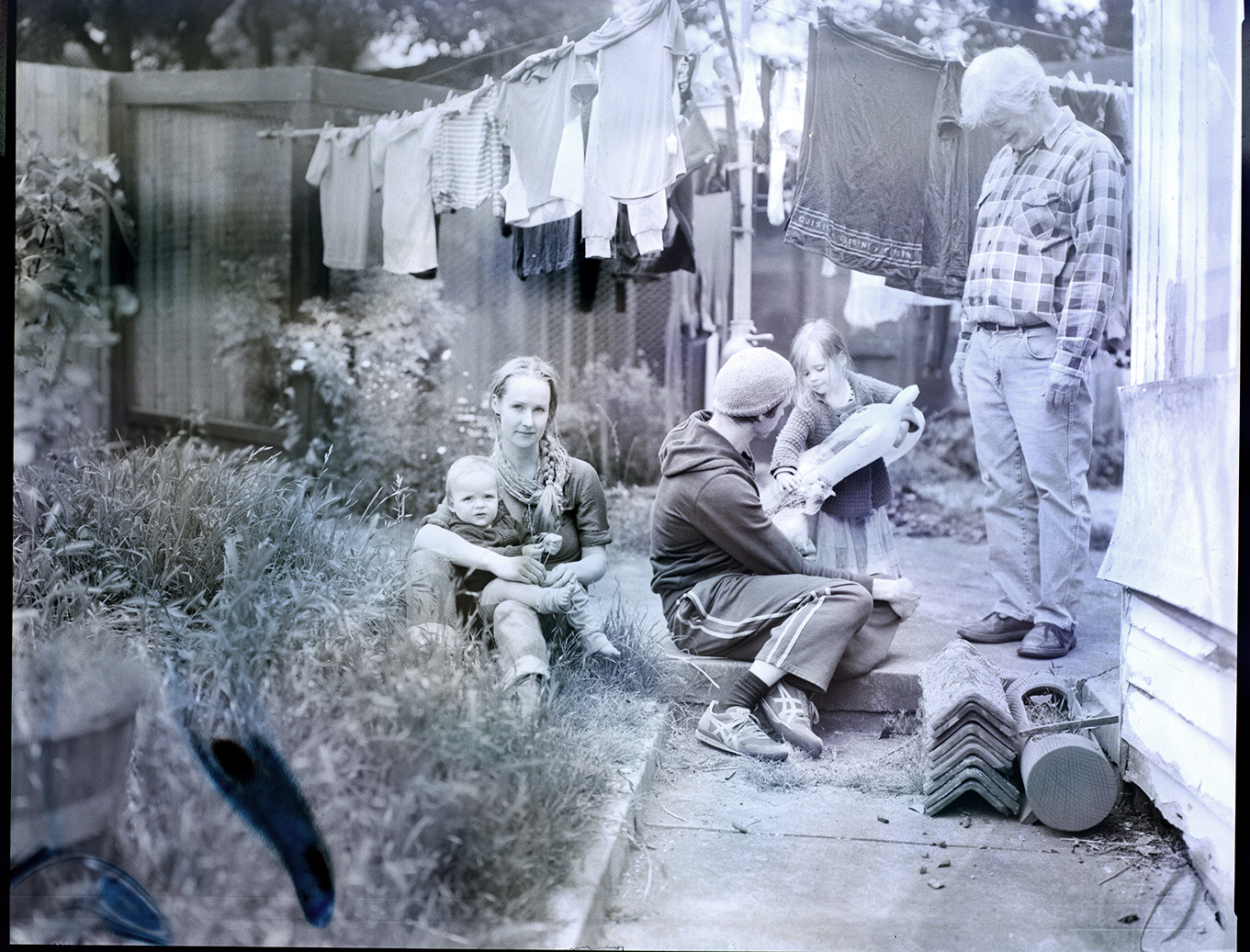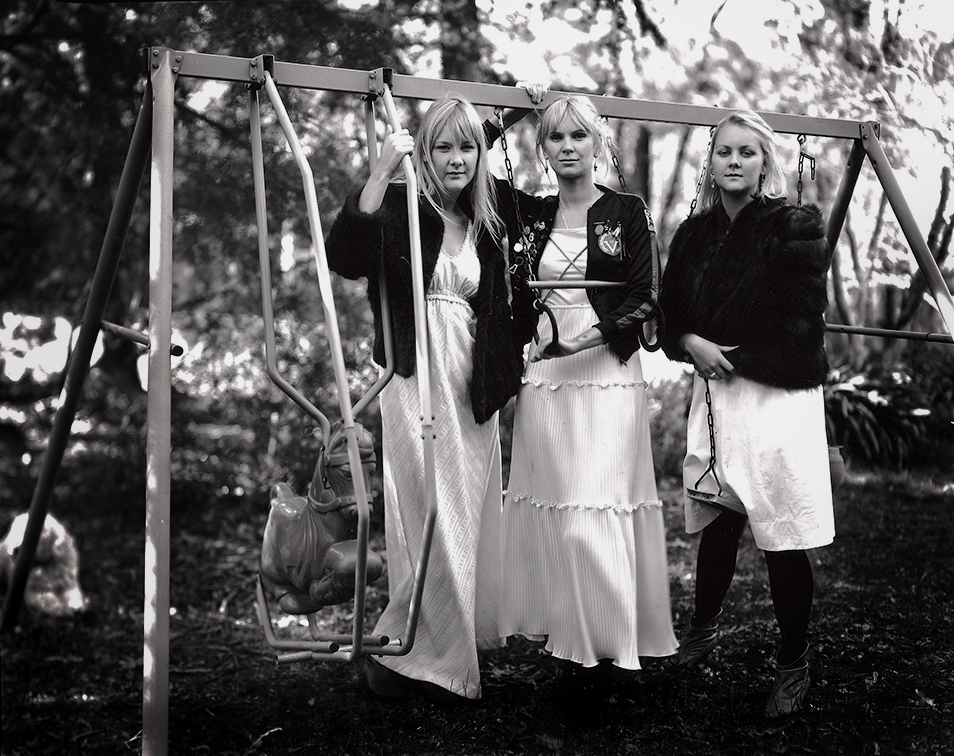This series was shot with an 8×10 view camera over almost a decade in the back gardens of three families living near Melbourne, Australia. The back gardens here in this dry, golden, sun-drenched country contrast so strongly with the lush green or frozen backyards of rural New York where I grew up. The vernacular, the textures the light are all so different here: dry earth, dust, sun through palm-leaves, coriander growing feral, the smell of over-ripe figs, the way the back garden is often another outdoor room here, an extension of the house, mysteriously growing into the family and reflecting the people who live in it.
Since the images were all shot with an 8×10 view camera, I had originally planned to enlarge them myself in the darkroom. However, after the birth of my first child I found that my photographic practice had to change. I only had an hour an a half per day to work while my son napped, and I soon realized that I would have to discover a new way to print the negatives – at home, very quietly, without chemicals, and always poised to dash away when I heard him wake up.
I started taping the 8×10 inch negatives to my back door window, shooting them with a digital camera, and then inverting them in Photoshop. Some of the colours and shapes from the garden on the other side of the window are visible in the final images: the residue of objects from my new life as a mother. A blue wading pool, scattered toys, laundry, a red hammock.
The images have two defining moments: the first when I clicked the shutter in other people’s back gardens, and the second when I re-shot the negatives on the window in my own back garden. In this way, even though there is a digital element involved, the process of making them reflects a traditional printing process, especially some of the alternative processes I have used before, like palladium, platinum or salt printing.




